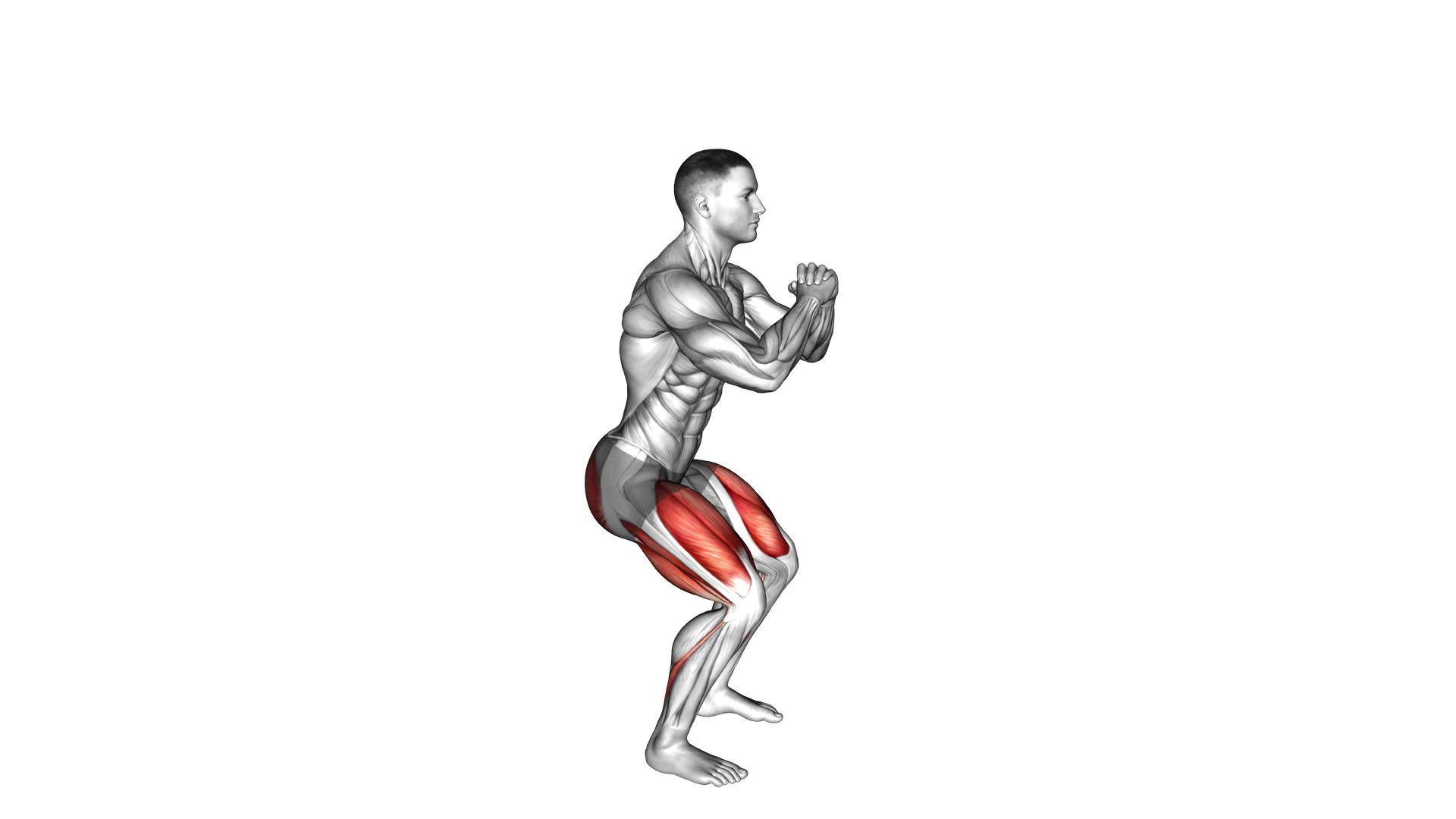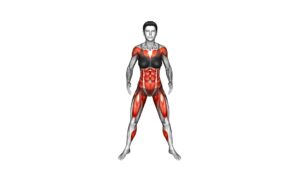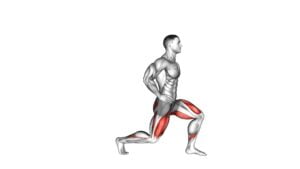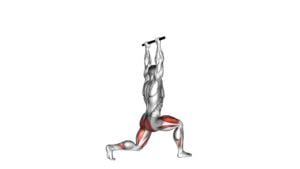Bodyweight Pulse Squat (male) – Video Exercise Guide & Tips

Get ready to level up your leg workout with the bodyweight pulse squat. This exercise is a great way to target your lower body and build strength.
Watch This Exercise Video
In this video guide, we'll show you the proper technique and common mistakes to avoid. Whether you're a beginner or an experienced fitness enthusiast, we've got modifications to suit your fitness level.
Don't miss out on these tips for maximizing your workout. Let's get started!
Key Takeaways
- Bodyweight pulse squats improve balance and increase lower body strength.
- They engage multiple muscle groups in the lower body, including the quadriceps, hamstrings, glutes, and calves.
- Proper technique includes maintaining proper body alignment, focusing on breathing techniques, performing controlled pulses, and engaging core muscles throughout the movement.
- Common mistakes to avoid include allowing knees to cave inward, rounding the back, rushing through the exercise, and compromising form and technique.
Benefits of Bodyweight Pulse Squat
You can experience numerous benefits from incorporating bodyweight pulse squats into your workout routine.
Not only do they help in improving balance, but they also contribute to increasing lower body strength.
When you perform bodyweight pulse squats, you engage multiple muscle groups in your lower body, including your quadriceps, hamstrings, glutes, and calves. This exercise helps to strengthen these muscles, leading to improved overall lower body strength.
In addition to increasing lower body strength, bodyweight pulse squats also help to improve balance.
As you pulse up and down in the squat position, you challenge your body to maintain stability and control.
This constant engagement of your core muscles, as well as the muscles in your legs and hips, helps to enhance your balance over time.
Incorporating bodyweight pulse squats into your workout routine is a convenient and effective way to target your lower body muscles while also improving your balance.
Whether you're a beginner or an experienced fitness enthusiast, this exercise can be modified to suit your fitness level.
Proper Technique for Bodyweight Pulse Squat
To perform the bodyweight pulse squat with proper technique, focus on maintaining a controlled and stable movement throughout the exercise. This will help you maximize the benefits and avoid any potential injuries. Here are some key tips to keep in mind:
- Body alignment: Stand with your feet hip-width apart and toes pointing slightly outward. Keep your chest lifted, shoulders relaxed, and core engaged throughout the movement. This will ensure proper alignment and help you maintain balance.
- Breathing techniques: Inhale as you lower your body into a squat position, keeping your weight in your heels and knees tracking over your toes. Exhale as you push through your heels and return to the starting position. Focusing on your breath will help you stay focused and maintain proper form.
- Controlled pulses: Once you're in the squat position, initiate small pulsing movements by slightly lifting and lowering your body. These controlled pulses will target your leg muscles and increase the intensity of the exercise. Remember to maintain stability and avoid any jerky movements.
Common Mistakes to Avoid
A common mistake to avoid when performing bodyweight pulse squats is failing to maintain proper form and alignment. To ensure you get the most out of this exercise and prevent injury, it's important to pay attention to your technique.
One common mistake is allowing your knees to cave inward during the squat. This can put unnecessary strain on your knees and increase the risk of injury. To avoid this, focus on pushing your knees outwards as you lower into the squat position.
Another common mistake is rounding your back during the movement. This not only decreases the effectiveness of the exercise but also puts strain on your lower back. To maintain proper form, keep your back straight and your chest lifted throughout the entire exercise.
Finally, rushing through the exercise is another mistake to avoid. Performing bodyweight pulse squats too quickly can compromise your form and reduce the effectiveness of the exercise. Take your time, focus on each repetition, and ensure you're maintaining proper technique throughout the entire movement.
Modifications for Different Fitness Levels
Achieving optimal results with bodyweight pulse squats requires adapting the exercise to accommodate different fitness levels. Whether you're a beginner or an advanced exerciser, there are modification options available to help you progress or regress the movement.
Here are some options to consider:
- Progression options for bodyweight pulse squats:
- Increase the depth of your squat by lowering your hips closer to the ground.
- Add resistance by holding dumbbells or a kettlebell while performing the exercise.
- How to regress bodyweight pulse squats for beginners:
- Perform the exercise with a chair or a bench behind you for support. This will help you maintain balance and stability.
- Reduce the range of motion by not squatting as low. Start with a comfortable depth and gradually increase it over time.
By using these modification options, you can tailor the bodyweight pulse squat to your fitness level and gradually challenge yourself as you progress.
Now, let's move on to the next section where we'll discuss some tips for maximizing your workout and getting the most out of your bodyweight pulse squats.
Tips for Maximizing Your Workout
As you progress with the bodyweight pulse squat, there are some tips that can help you maximize your workout and continue challenging yourself. One common misconception is that doing more repetitions will lead to better results. While it's important to push yourself, it's equally important to maintain proper form and technique. Focus on quality over quantity to prevent injury and ensure optimal muscle engagement.
Another tip is to vary your tempo during the exercise. Instead of performing the pulses at a consistent speed, try slowing down the eccentric (lowering) phase and speeding up the concentric (raising) phase. This variation will increase the intensity of the exercise and challenge your muscles in different ways.
Additionally, it's crucial to find the best time to do the workout. Some people prefer doing it in the morning to kickstart their day, while others find it more beneficial in the evening to relieve stress and tension. Experiment with different times to determine when you feel the most energized and focused during the workout.
Remember to listen to your body and give yourself enough rest and recovery between workouts. Overtraining can lead to burnout and hinder your progress. By incorporating these tips and staying consistent with your bodyweight pulse squat routine, you can maximize your workout and continue advancing towards your fitness goals.
Frequently Asked Questions
How Many Sets and Reps Should I Do for the Bodyweight Pulse Squat Exercise?
For the bodyweight pulse squat exercise, you're probably wondering how many sets and reps to do. Well, the number of sets and reps can vary depending on your fitness level and goals.
Generally, it's recommended to start with 2-3 sets of 10-12 reps. This will help you build strength and endurance in your lower body.
As you progress, you can increase the number of sets and reps or try different variations of the bodyweight pulse squat to challenge yourself and reap the benefits.
Can Bodyweight Pulse Squats Help in Building Muscle Mass?
Bodyweight pulse squats can be beneficial for building muscle mass. By incorporating this exercise into your routine, you can target multiple muscle groups, including your quadriceps, glutes, and hamstrings.
The pulsing motion adds an extra challenge, intensifying the muscle contractions and promoting muscle growth. Additionally, there are various variations of the bodyweight pulse squat that you can try to keep your workouts interesting and continue challenging your muscles.
Is It Necessary to Warm up Before Performing Bodyweight Pulse Squats?
Before performing bodyweight pulse squats, it's crucial to warm up your muscles. Warming up increases blood flow, flexibility, and reduces the risk of injury.
Start with a few minutes of light cardio, like jogging or jumping jacks. Then, perform dynamic stretches that target the lower body, such as leg swings and hip circles.
Beginners can modify bodyweight pulse squats by using a chair for support or reducing the depth of the squat.
Are Bodyweight Pulse Squats Suitable for People With Knee or Back Issues?
If you have knee or back issues, it's important to consider modifications for bodyweight pulse squats. These modifications can help reduce strain on your joints and prevent further injury.
For example, you can try using a chair or wall for support while performing the exercise.
Alternatively, there are other exercises that can target the same muscle groups without putting as much stress on your knees or back, such as lunges or glute bridges.
Always consult with a healthcare professional before starting any new exercise routine.
Can Bodyweight Pulse Squats Be Incorporated Into a Circuit Training Routine?
Incorporating bodyweight pulse squats into a circuit training routine can provide numerous benefits.
These squats help to strengthen your lower body, improve balance and stability, and increase overall muscle endurance.
They can be modified and varied depending on your fitness level, allowing everyone to participate.
Beginners can start with regular pulse squats while more advanced individuals can try adding jumps or weights.
Including bodyweight pulse squats in a HIIT workout routine can enhance the intensity and effectiveness of your training.
Conclusion
In conclusion, the bodyweight pulse squat is a highly effective exercise for strengthening the lower body muscles. By performing this exercise with proper technique and avoiding common mistakes, individuals of all fitness levels can benefit from this workout.
Remember to make modifications when necessary and follow the provided tips to maximize your results. Incorporating bodyweight pulse squats into your fitness routine will help you achieve your fitness goals and improve your overall strength and stability.

Author
Years ago, the spark of my life’s passion ignited in my mind the moment I stepped into the local gym for the first time. The inaugural bead of perspiration, the initial endeavor, the very first surge of endorphins, and a sense of pride that washed over me post-workout marked the beginning of my deep-seated interest in strength sports, fitness, and sports nutrition. This very curiosity blossomed rapidly into a profound fascination, propelling me to earn a Master’s degree in Physical Education from the Academy of Physical Education in Krakow, followed by a Sports Manager diploma from the Jagiellonian University. My journey of growth led me to gain more specialized qualifications, such as being a certified personal trainer with a focus on sports dietetics, a lifeguard, and an instructor for wellness and corrective gymnastics. Theoretical knowledge paired seamlessly with practical experience, reinforcing my belief that the transformation of individuals under my guidance was also a reflection of my personal growth. This belief holds true even today. Each day, I strive to push the boundaries and explore new realms. These realms gently elevate me to greater heights. The unique combination of passion for my field and the continuous quest for growth fuels my drive to break new ground.







